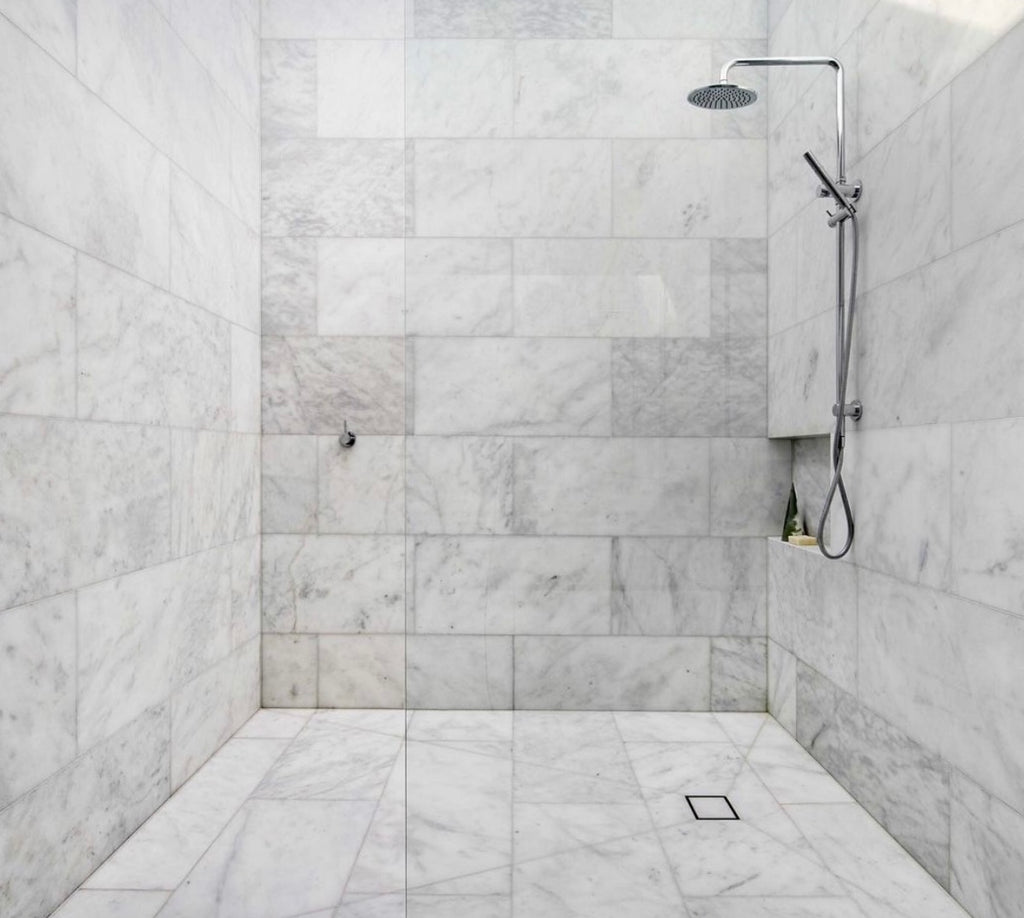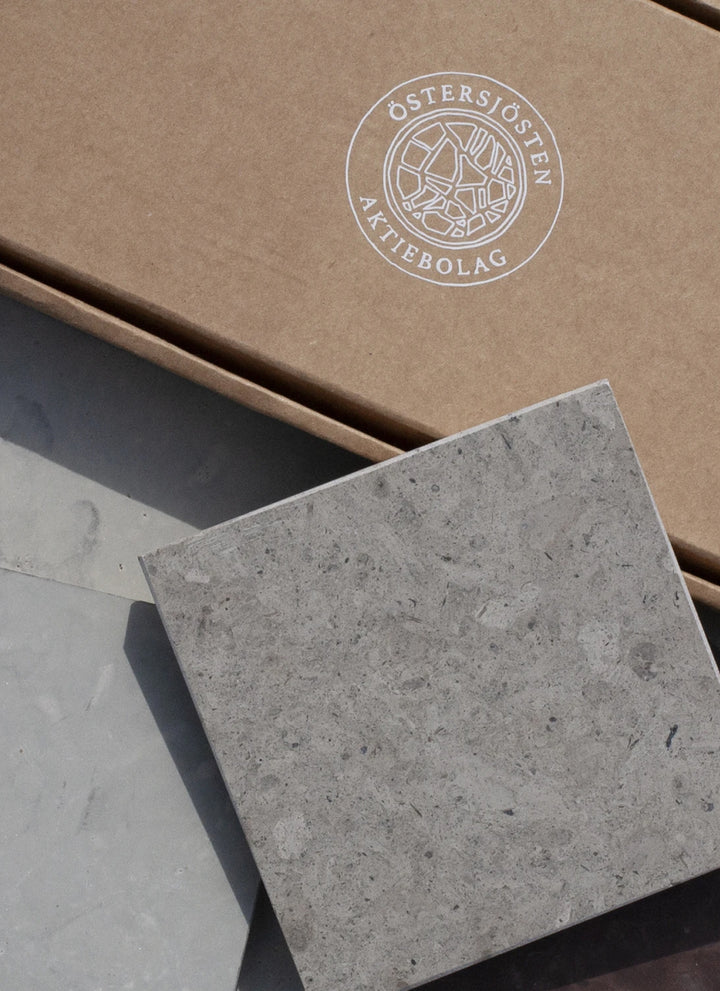
Guide
Fall and floor drain in the shower

For the durability of natural stone, it is important that shower water with shampoo and soap residues easily flows off the floor, meaning there is a fall. But it can be difficult to get a fall into the shower in a nice and at the same time functional way. In this article, we provide inspiration and information about falls in showers and floor drains - for a nice, practical and the most durable bathroom as possible.
Building a fall in shower
A good fall in the shower is very important when building or renovating a bathroom, as this allows for the water to drain off the floor properly. This is especially important when using limestone or marble floors. If you have a bad fall, there is a risk of shampoo and soap residues remaining on the floor and eventually damaging the stone.
A fall means a leaning in the floor towards the floor drain where the water is to run down. You can build the fall in a few different ways, depending on which floor drain you choose. So, let's look at the different floor drain types first.
There are three different types of floor drains. The most popular type is a standard round or square well placed in the center of the shower. The other is a linear drain (also called a gutter drain) which is usually placed against the wall in the shower where the mixer is located. The last type are corner drains, where the well is placed in a corner and has a triangular shape.
Whether you are carrying out a renovation or new construction - be out in good time when choosing a floor drain! The type of floor drain you can choose from is governed by the location of the water drain in the shower.



Fall and floor drain for larger stone tiles
If you want larger stone tiles that cover the entire floor, you should choose a line drain or corner drain. If you choose a line drain that covers the width of the shower floor or a corner drain, only one direction of leaning is required, and then you can use larger stone tiles without problems.

The centered floor drain
If you have laid the most common floor drain, that is the one that is placed in the middle of the shower, usually you should go down in smaller sizes on the stone tiles because the entire floor is tilted towards the well from all directions. We sell smaller formats (10x10 and 15x15 cm) of our most popular stones Lindanäs Honed och Lindanäs Brushed, with this in mind.
If you have a centered drain and after all want to continue with larger tiles in the shower, there is a solution! By making so-called envelope cutting or diagonal cutting of the larger tiles, you can create the right case. Envelope cutting or diagonal cutting simply means cutting the square stone tiles diagonally and thus angling the tiles down towards the centered drain. This method requires that the tiles has previous experience for it to be really good. An elegant but demanding way to solve the case.

Finally. Perhaps the most important detail on the shower floor is the drain cover. Here you can either match the finish on steel with the mixer and other steel details (chrome, brass, brushed steel, etc.). Something that we obviously think is the best are models where the natural stone is used as a lid. Incredibly beautiful and harmonious!
Note! Remember to always choose a strainer that is acid-resistant. The fact that it is acid-resistant simply means that the strainer does not release acid that damages the natural stone.
- choosing a selection results in a full page refresh
